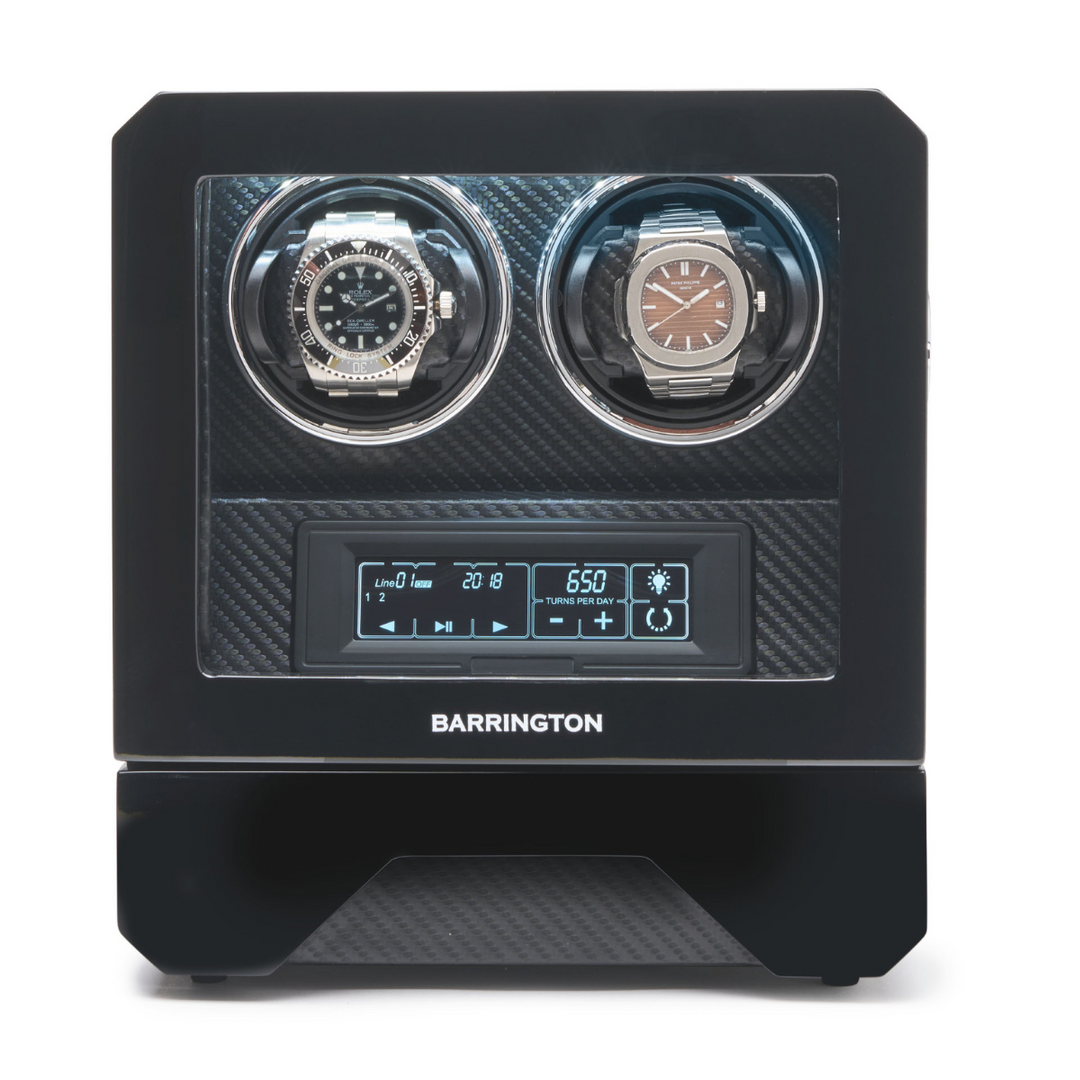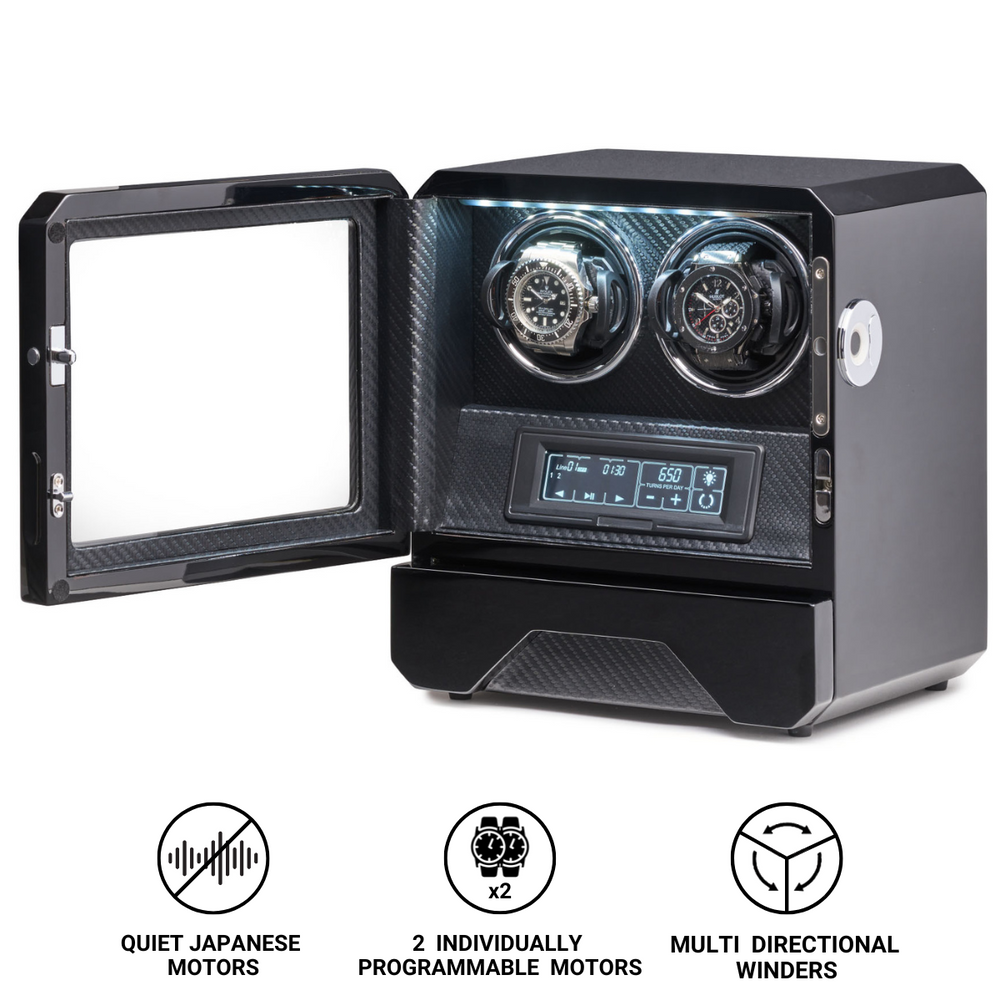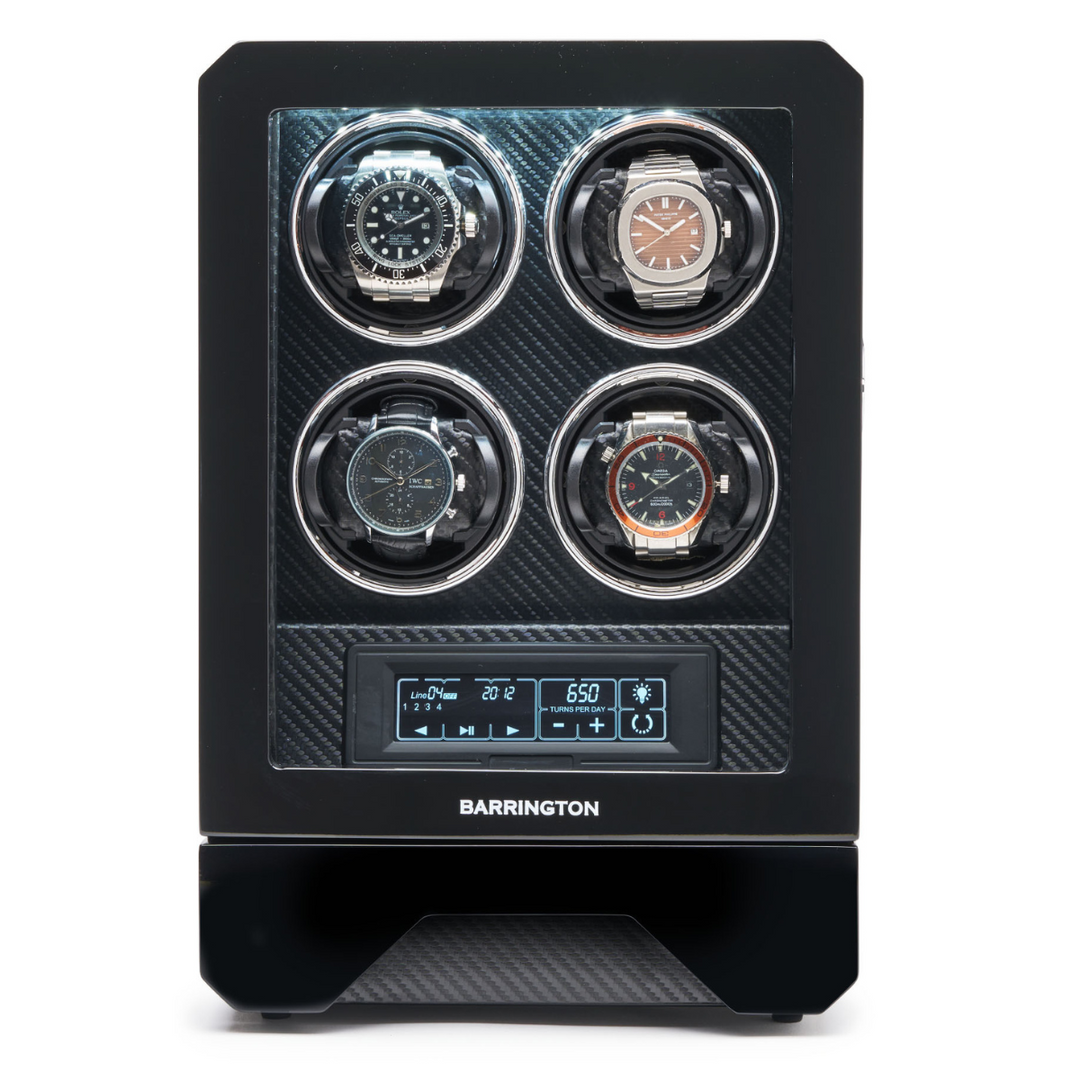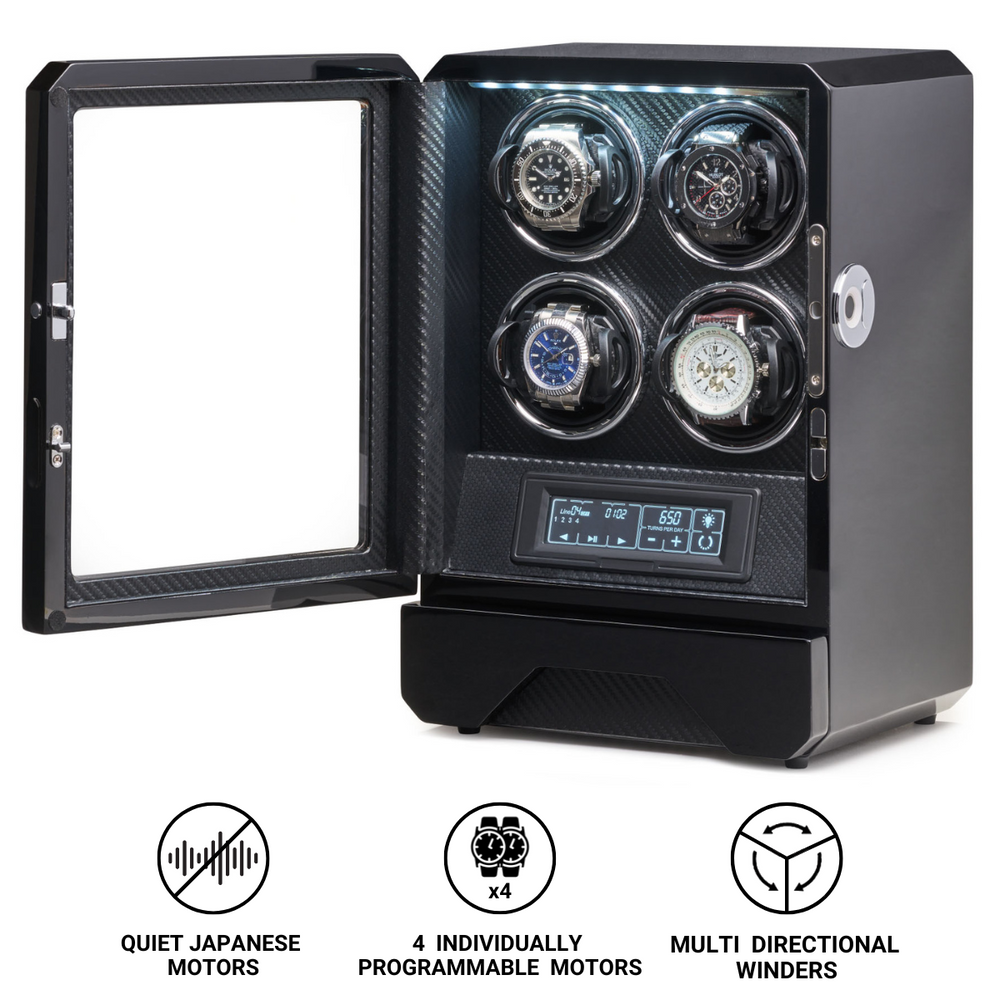Audemars Piguet: History of the watch brand
Key Points:
Founded in 1881 in the Vallée de Joux, Audemars Piguet remains one of the few independent, family-run Swiss watchmakers.
Pioneered horological milestones including the first minute repeater wristwatch (1892), the Grand Complication pocket watch (1899), and the iconic Royal Oak (1972).
The Royal Oak defined the category of luxury steel sports watches and remains one of the most recognisable timepieces in the world.
Today, Audemars Piguet blends tradition with bold innovation, offering sought-after collections like the Royal Oak Offshore, Millenary, and Code 11.59.
Among the great names of Swiss watchmaking, few command as much respect and admiration as Audemars Piguet. For well over a century, the brand has been synonymous with technical mastery, artistic daring, and an uncompromising pursuit of excellence. It is one of the so-called “Holy Trinity” of haute horlogerie, alongside Patek Philippe and Vacheron Constantin – a trio regarded as the very pinnacle of traditional watchmaking.
Yet what sets Audemars Piguet apart is not only its heritage but also its spirit of innovation. From the earliest complicated pocket watches to the groundbreaking Royal Oak, the manufacture has consistently challenged convention while remaining rooted in the traditions of Vallée de Joux craftsmanship. The result is a brand identity that fuses timeless artistry with modern boldness – a balance that continues to captivate collectors and enthusiasts around the world.
Origins in Vallée de Joux (1875–1881)
The roots of Audemars Piguet can be traced to the Vallée de Joux, a secluded valley in the Swiss Jura Mountains whose name has become inseparable from the history of haute horlogerie. Harsh winters, isolation from the larger cities, and a culture of precision craftsmanship created the perfect environment for watchmaking to flourish. Families in the region would dedicate long winter months to producing intricate components, and over time the valley gained renown as the home of some of Switzerland’s most sophisticated complications.
It was in this unique setting that Jules-Louis Audemars and Edward-Auguste Piguet reunited in 1875. Childhood acquaintances who had both pursued careers in watchmaking, they discovered that their skills complemented one another perfectly. Jules-Louis Audemars was a brilliant technical mind, specialising in the design and assembly of complicated movements such as perpetual calendars, minute repeaters, and chronographs. Edward-Auguste Piguet, meanwhile, excelled in precision regulation and had an astute sense for business, organisation, and customer relations.
Rather than working independently, the two men saw the potential of collaboration. Their decision to divide responsibilities proved visionary: Audemars took charge of production and technical innovation, while Piguet concentrated on management, sales, and expanding the company’s network beyond Switzerland. This dynamic ensured that the watches leaving their workshop combined both mechanical excellence and commercial appeal.
The Vallée de Joux itself played a decisive role in their early success. Surrounded by other skilled craftsmen and with access to natural resources, the founders benefited from a thriving ecosystem of horology. Workshops in the region often collaborated, exchanging ideas and components, which accelerated progress and allowed small ateliers to compete with much larger manufacturers. Against this backdrop, Audemars and Piguet were able to establish their reputation with remarkable speed.
By 1881, their partnership had matured into a formal business registered as Audemars, Piguet & Cie. Unlike many contemporaries who were eventually absorbed by large groups, the company was deliberately kept within the families of its founders. This emphasis on independence would become a defining characteristic of Audemars Piguet, shaping the brand’s future identity as both a guardian of tradition and a pioneer unafraid to take risks.
Early Masterpieces and Technical Milestones (1880s–1940s)
From its very beginnings, Audemars Piguet sought not simply to produce watches, but to push the boundaries of mechanical artistry. The final decades of the nineteenth century saw the young manufacture establish itself as a creator of highly complicated pocket watches that quickly gained international acclaim. Collectors and jewellers across Europe and the United States were drawn to the technical sophistication and refined finishing that distinguished every piece.
One of the most remarkable aspects of these formative years was the pace of innovation. Audemars Piguet seemed determined to demonstrate mastery of horology’s greatest challenges, and the maison’s achievements soon read like a catalogue of firsts and milestones.
Key highlights include:
-
1880s – Production of complicated pocket watches with perpetual calendars and minute repeaters, placing the brand firmly among the elite of Swiss watchmaking.
-
1892 – Creation of the world’s first minute repeater wristwatch, a technical breakthrough that adapted a traditional complication to the then-novel format of a wrist-worn timepiece.
-
1899 – The unveiling of the Grand Complication pocket watch, a masterpiece that incorporated multiple high complications including a perpetual calendar, chronograph with split seconds, deadbeat seconds, and a grande and petite sonnerie.
-
1921 – Development of one of the earliest jumping-hour wristwatches, reflecting the brand’s flair for unconventional time displays.
-
1925 – Introduction of the thinnest pocket watch calibre of its time, underscoring AP’s ability to combine elegance with mechanical rigour.
-
1934 – Creation of the first skeletonised pocket watch, offering a daring glimpse into the workings of the movement and highlighting the aesthetic beauty of mechanics.
-
1946 – Production of the thinnest wristwatch movement then known, a technical feat that reinforced Audemars Piguet’s reputation for finesse and innovation.
Alongside these horological triumphs, the maison expanded its reach well beyond Switzerland. Branches were opened in major European capitals including London, Paris, and Berlin, as well as in New York, where American collectors eagerly embraced the brand’s chronographs and complicated watches. This global presence not only secured Audemars Piguet’s commercial success but also established it as one of the most respected names in fine watchmaking long before the mid-twentieth century.
By the 1940s, the company had built a reputation for technical daring and artistic refinement that placed it in the front rank of Swiss horology. The foundation had been laid for the next chapter – one that would see the maison confront global upheavals and later, the most disruptive challenge of all, the Quartz Crisis.
Surviving Challenges and Global Recognition (1940s–1960s)
The mid-twentieth century was a turbulent time for the watch industry. The Second World War had disrupted supply chains and markets, yet Audemars Piguet managed not only to endure but to strengthen its international reputation. While many manufactures struggled, AP’s strategy of focusing on technical refinement and selective markets ensured that demand remained steady.
In particular, the brand’s chronographs became immensely popular in the United States. Collectors and professionals alike valued their precision and elegant design, and the American market soon accounted for a significant share of production. This success helped shield the company from some of the difficulties faced by other Swiss watchmakers during the post-war years.
Equally important was Audemars Piguet’s continued independence. While many competitors were absorbed into larger groups, AP remained under the control of the founding families. This autonomy allowed the maison to preserve its identity, prioritising long-term excellence over short-term commercial pressures. It also reinforced the perception of Audemars Piguet as a true manufacture, one that produced watches in limited numbers for discerning clients rather than chasing mass production.
To illustrate the era’s defining characteristics, here is a summary of Audemars Piguet’s position in the 1940s through the 1960s:
|
Decade |
Key Developments |
Market Impact |
|
1940s |
Strong demand for chronographs in the United States |
Established AP as a leading supplier of refined, reliable timepieces overseas |
|
1950s |
Post-war recovery and renewed focus on elegant wristwatches |
Expansion of international clientele, strengthening brand recognition in Europe and America |
|
1960s |
Continued family ownership and emphasis on technical artistry |
Reinforced independence and exclusivity, maintaining status among the world’s elite watchmakers |
By the close of the 1960s, Audemars Piguet had successfully navigated decades of global upheaval while enhancing its prestige. It stood as a symbol of resilience, innovation, and family tradition – qualities that would soon prove invaluable when the greatest challenge of all, the Quartz Crisis, shook the industry to its core.
The Quartz Crisis and the Birth of an Icon: Royal Oak (1972)
The early 1970s brought one of the greatest upheavals in the history of watchmaking. Japanese manufacturers, led by Seiko, introduced inexpensive quartz watches that were not only highly accurate but also far cheaper to produce than traditional mechanical timepieces. Swiss brands, long admired for their artistry and complications, suddenly faced an existential threat. Many maisons responded by cutting costs or attempting to enter the quartz market themselves.
Audemars Piguet, however, chose a different path. Rather than compromise its reputation for fine mechanical watchmaking, the company resolved to create something that would redefine luxury itself. To achieve this, AP turned to Gérald Genta, a visionary designer who had already established himself as one of the most inventive figures in contemporary horology.
The result was the Royal Oak, unveiled in 1972. Its appearance was unlike anything seen before. Inspired by the shape of a traditional diving helmet, the watch featured an octagonal bezel with eight exposed screws, a visible gasket, and an integrated steel bracelet. At 39 mm, it was considered large for the era, and it was priced at the same level as many gold watches. The combination of industrial design and premium positioning was nothing short of audacious.
Initial reactions were mixed. Some critics dismissed the Royal Oak as too unconventional and too expensive for a watch made of stainless steel. Yet among forward-thinking collectors, the design quickly gained traction. Its blend of bold aesthetics, impeccable finishing, and technical excellence resonated with a new generation of buyers. Over time, the Royal Oak would become not just a success but a phenomenon.
In doing so, Audemars Piguet created an entirely new category – the luxury steel sports watch. The Royal Oak set the template for others to follow, most famously Patek Philippe’s Nautilus, also designed by Genta. What began as a risky gamble to survive the Quartz Crisis evolved into the cornerstone of Audemars Piguet’s identity and one of the most recognisable icons in modern watchmaking.
Comment from Barrington Watch Winders: The creation of the Royal Oak showed that bold innovation can define an era. At Barrington Watch Winders, we share this philosophy – combining precision engineering with modern design to ensure automatic watches are not only maintained but celebrated.
Expanding the Legacy: Royal Oak Offshore, Millenary and Beyond (1980s–2000s)
Having secured its place in horological history with the Royal Oak, Audemars Piguet continued to build on this success in the closing decades of the twentieth century. Rather than rely solely on one iconic model, the manufacture introduced bold reinterpretations and entirely new collections, reinforcing its image as a watchmaker unafraid of risk and innovation.
In 1993, the brand unveiled the Royal Oak Offshore, a larger, more muscular evolution of the original Royal Oak. Designed by Emmanuel Gueit, the Offshore pushed boundaries with its 42 mm case size, substantial presence, and sporty aesthetics. Initially controversial among purists, it eventually won over collectors and became a symbol of modern luxury sports watches, beloved by athletes, celebrities, and younger enthusiasts.
Two years later, in 1995, Audemars Piguet introduced the Millenary collection. Distinguished by its elliptical case and off-centre dials, the Millenary combined classical inspiration with avant-garde design. Its architectural layout provided a stage for showcasing complications and openworked movements, appealing to those who valued both originality and technical sophistication.
Alongside these flagship launches, the maison pursued a strategy of producing highly limited models and complicated masterpieces that demonstrated its technical authority. These included perpetual calendars, tourbillons, and chiming mechanisms, often released in daringly small numbers that ensured exclusivity for collectors.
Key highlights of the period include:
-
1993 – Launch of the Royal Oak Offshore, the first truly modern oversized luxury sports watch.
-
1995 – Introduction of the Millenary, an unconventional design blending classical and contemporary aesthetics.
-
1990s–2000s – Development of limited editions featuring perpetual calendars, skeletonised movements, and minute repeaters, cementing AP’s reputation for technical mastery.
-
Collaborations and bespoke creations – The brand catered to collectors seeking exclusivity, producing unique or extremely limited models that soon became sought-after rarities.
By the early 2000s, Audemars Piguet had expanded its portfolio into a diverse range that balanced heritage with innovation. The Royal Oak remained the cornerstone, but the Offshore and Millenary collections ensured that the maison continued to lead the conversation in both style and substance. This period confirmed Audemars Piguet’s ability to adapt to changing tastes while maintaining the prestige of a true manufacture.

Source: monochrome-watches.com
Modern Boldness: The Code 11.59 Collection (2019–Present)
In 2019, Audemars Piguet once again demonstrated its willingness to defy convention with the launch of the Code 11.59 collection. Introduced in a market that often leans heavily on tradition, the new line was a bold statement from a maison that has never been content to stand still. It was a reminder that while the Royal Oak is an undisputed icon, Audemars Piguet remains determined to shape the future of fine watchmaking on its own terms.
At first glance, the Code 11.59 appeared to be a classical round watch. Yet closer inspection revealed a wealth of contemporary details. The octagonal mid-case, inspired by the Royal Oak’s famous bezel, was seamlessly integrated into the circular frame. Ultra-thin bezels allowed for expansive sapphire crystals, creating a sense of openness and modernity. The collection also served as a canvas for highly complicated pieces, including perpetual calendars, tourbillons, and minute repeaters, executed with the finesse expected from a house of AP’s calibre.
The initial reception from collectors and critics was mixed. Some praised the ambition and technical quality, while others questioned the aesthetics. Over time, however, the design’s subtleties began to win appreciation. As with the Royal Oak in 1972, what seemed disruptive at launch gradually came to be recognised as forward-thinking. Today, the Code 11.59 is respected as an essential pillar of Audemars Piguet’s portfolio, embodying the maison’s ethos of blending classical craftsmanship with modern boldness.
The collection stands as proof that Audemars Piguet continues to challenge the expectations of a conservative industry. By doing so, it ensures that the brand’s story is not just about preserving tradition but also about keeping the flame of innovation alive for future generations.
Audemars Piguet Today
In an era when many historic maisons have been absorbed into global luxury groups, Audemars Piguet remains proudly independent and under the stewardship of the founding families. This continuity ensures that decisions are guided by long-term vision rather than short-term profit, preserving the distinctive spirit that has characterised the brand since its creation in the Vallée de Joux. Independence has allowed Audemars Piguet to remain agile, innovative, and deeply committed to the traditions of haute horlogerie.
From a collector’s perspective, Audemars Piguet timepieces are also regarded as strong investments. The Royal Oak in particular has achieved near-mythical status on the secondary market, with many models trading at premiums well above their original retail prices. Limited editions and complicated pieces are highly sought after, reflecting not only the rarity of production but also the enduring desirability of the brand’s aesthetic and technical achievements. For many enthusiasts, owning an Audemars Piguet is as much about safeguarding value as it is about personal enjoyment.
Beyond the world of collecting, Audemars Piguet holds a powerful cultural presence. The Royal Oak and Royal Oak Offshore are favourites among athletes, musicians, and actors, regularly appearing on the wrists of global icons. This visibility has helped to position AP not just as a watchmaker but as a lifestyle statement, one that bridges the worlds of craftsmanship, design, and modern culture. At the same time, its reputation among serious horologists ensures that the brand retains credibility with connoisseurs who value substance as much as style.
Today, Audemars Piguet stands as both a guardian of tradition and a beacon of contemporary cool. Its independence, investment appeal, and cultural influence confirm its position not only as one of the “Holy Trinity” but also as a brand that continues to shape the conversation in luxury watchmaking.
Comment from Barrington Watch Winders: Collectors know that owning an Audemars Piguet is about more than telling time – it is about preserving heritage. Our watch winders are designed to protect that legacy, keeping every automatic movement ready to perform at its best.
The Perfect Home for Your Audemars Piguet: Barrington Watch Winders
Owning a timepiece from Audemars Piguet is not only a privilege but also a responsibility. Watches such as the Royal Oak or Royal Oak Offshore are masterpieces of engineering that deserve to be kept in the best possible condition when not on the wrist. A high-quality watch winder ensures that the delicate mechanisms remain lubricated and accurate, preventing the inconvenience of resetting complications and safeguarding the long-term health of the movement. With this in mind, Barrington Watch Winders offers a collection of precision-engineered watch winders designed to protect, preserve, and showcase your most treasured timepieces.
Barrington Single Winder - Shadow Black

(The Barrington Single Winder in Shadow Black is a refined solution for keeping any automatic watch in peak condition. Compact in size yet rich in functionality, it offers customisable rotation settings in clockwise, counter-clockwise, or alternating modes, along with a choice of multiple Turns Per Day to suit different calibres. The sleek design is paired with a premium Japanese motor that operates almost silently, making it a discreet companion in any room, even the bedroom. Flexible power options allow for either mains or AA battery use, while the unique ‘Jump’ feature enables several winders to be linked together and powered from a single source.
Attention to detail extends to the user experience. A choice of cushions ensures a secure fit for a wide range of wrist sizes, while the LED indicator offers a subtle confirmation of operation. Combining precision engineering with understated elegance, the Shadow Black winder is more than just a practical accessory – it is an ideal way to protect, preserve, and present treasured timepieces such as the Audemars Piguet Royal Oak).
Barrington Special Edition Single Winder - Grey Koto

(The Barrington Special Edition Single Winder in Grey Koto combines refined aesthetics with advanced functionality, making it an ideal choice for discerning collectors. Its compact design houses a whisper-quiet Japanese motor with customisable rotation modes and multiple Turns Per Day settings, ensuring compatibility with virtually any automatic watch. Flexible power options and the Barrington ‘Jump’ feature allow effortless connection of multiple units for a seamless display, while the Grey Koto finish adds a touch of sophistication that elevates any watch collection).
2 Watch Winder

(The Barrington 2 Watch Winder is designed for collectors who demand both functionality and sophistication. Housed in a sleek gloss cabinet with carbon-effect detailing, it features two individually programmable rotors, allowing each watch to be wound according to its specific requirements. The ultra-quiet Japanese motors ensure smooth and silent performance, while a fingerprint scanner and remote control add a layer of modern convenience and security. With a digital touch display, LED downlighters, and a built-in storage drawer for additional timepieces, this winder provides a luxurious yet practical solution for maintaining and showcasing your automatic watches).
Every Audemars Piguet represents a legacy of craftsmanship and innovation, and it should be treated with the same respect with which it was created. A Barrington watch winder not only keeps your watch ready to wear at all times but also provides a stylish way to display your collection. Combining advanced functionality with elegant design, our winders are the perfect companion for collectors who expect nothing less than excellence in both performance and presentation.
Conclusion
Audemars Piguet stands today as both a guardian of horological tradition and a driver of innovation. From its early pocket watch complications to the pioneering Royal Oak and the forward-looking Code 11.59, the maison has consistently redefined what fine watchmaking can be. Its independence, technical daring, and cultural influence have secured its place as an icon for collectors around the world. To own an Audemars Piguet is to hold a piece of living history, one that embodies artistry, precision, and boldness.
Such timepieces deserve to be cared for with the same dedication with which they were created. At Barrington Watch Winders, we understand the importance of keeping automatic watches like the Royal Oak or the Offshore properly maintained when not worn. Our precision-engineered winders ensure your watch remains accurate and ready to wear, while also offering an elegant way to display your collection. Just as Audemars Piguet blends tradition with modernity, Barrington Watch Winders provides the perfect balance of craftsmanship and innovation to protect and showcase the watches you value most.
FAQ: Audemars Piguet – History of the Watch Brand
When was Audemars Piguet founded?
Audemars Piguet was officially established in 1881 by Jules-Louis Audemars and Edward-Auguste Piguet in the Vallée de Joux, Switzerland. Both men brought complementary skills to the partnership, with Audemars focusing on technical innovations and Piguet on sales and management. Their decision to remain independent ensured that the brand developed a unique identity within the world of haute horlogerie.
What makes the Royal Oak so important in watchmaking history?
The Royal Oak, designed by Gérald Genta and launched in 1972, created an entirely new category: the luxury steel sports watch. At the time, a high-end watch made in stainless steel and priced on par with gold models was seen as revolutionary. Over the decades, the Royal Oak became an enduring icon and remains one of the most recognisable timepieces in the world.
How did Audemars Piguet survive the Quartz Crisis?
During the 1970s Quartz Crisis, many Swiss watchmakers struggled or disappeared altogether. Audemars Piguet took a bold decision not to compete with mass-market quartz watches but to double down on luxury mechanical watchmaking. By introducing the Royal Oak, the company turned crisis into opportunity and secured its future as a leading innovator.
Are Audemars Piguet watches considered a good investment?
Yes, many Audemars Piguet watches, especially the Royal Oak and its limited editions, are highly sought after on the secondary market. Due to their scarcity, craftsmanship, and cultural significance, these models often appreciate in value over time. Collectors see them not only as masterpieces of horology but also as assets that combine enjoyment with long-term financial security.
How can I best take care of my Audemars Piguet watch?
Proper care involves regular servicing and appropriate storage when the watch is not being worn. Automatic models such as the Royal Oak or Royal Oak Offshore benefit from a quality watch winder, which keeps the mechanism in motion and preserves accuracy. At Barrington Watch Winders, we design precision-engineered solutions that maintain your watch’s performance while providing an elegant display.














